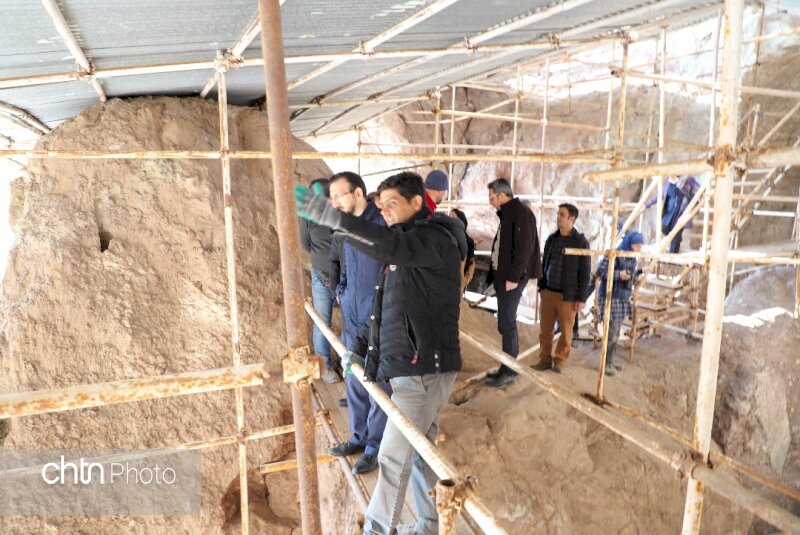Ancient fibers, animal remains discovered by Iranian, German archaeologists

TEHRAN – A team of Iranian and German archaeologists has discovered ancient fibers and animal remains while digging into an old salt mine in west-central Iran.
Co-led by senior archaeologist Iranian Abolfazl Aali and his German fellow Thomas Stöllner, the team aims to gain further strong evidence about the history of mining at Chehrabad salt mine, particularly in the Achaemenid (c. 550 – 330 BC) and Sassanid (224-651 CE) eras, according to the Research Institute for Cultural Heritage and Tourism (RICHT).
“We discovered some animal remains and straw in a Sassanid-era tunnel… it seems that the beasts of burden were brought to those places to carry salt out of the mine,” CHTN quoted Aali as saying on Thursday.
In the current excavations, which is the fifth season, a considerable amount of wool fabrics, woods, straws, animal remains have been discovered so far, the provincial tourism chief, Amir Arjmand, said during his visit to the mine on Tuesday.
An extensive excavation to the deeper parts of the Chehrabad salt mine is scheduled to be carried out for next spring, Arjmand said.
According to Aali, results of previous excavations suggest that Chehrabad has been the subject of a long-term activity that started from the Achaemenid era continuing in different periods including Sassanid, Seljuk, Safavid, Qajar, and Pahlavi periods.
What was a catastrophe for the ancient miners has become a sensation for science. Sporting a long white beard, iron knives, and a single gold earring, the first salt mummy was discovered in 1993. He is estimated to be trapped in the mine in ca. 300 CE. In 2004 another mummy was discovered only 50 feet away, followed by another in 2005 and a “teenage” boy mummy later that year.
“Several miners known today as salt men were trapped, killed, and buried inside the mine in various periods including the Achaemenid, the beginning and end of the Sassanid era, as well as Qajar and Pahlavi periods,” the archaeologist explained.
“Collapses occurred in Chehrabad mine and its extraction tunnels mostly due to the lack of integration of salt veins, earthquakes, and non-observance of safety issues.”
Currently, a special exhibition featuring Iranian and German studies in the realm of ancient mining is underway at the National Museum of Iran in downtown Tehran.
It puts the spotlight on the appropriation of humans to mineral resources and the development of the history of human experiences and achievements in mining, which led to the development of technologies, the formation of professions, trade, and specialization of industries.
"Highlights of Ancient Mining from Deutsches Bergbau-Museum Bochum" and "Death by Salt" are highlights of the event, which will be running through January 14, 2022.
Iranian, German archaeologists in search of clues about Achaemenid, Sassanid miners
According to Jebrael Nokandeh, the director of the National Museum, the museum and the German Mining Museum in Bochum have made considerable cooperation in line with an agreement they signed in 2017, based on which the two institutions are set to hold exhibitions of each other's historical and cultural artifacts related to the subject of ancient mining.
It is worth mentioning that similar loan exhibitions featuring ancient mining and relevant documents were already staged in Iran and Germany.
Last year, a team of experts from the two countries started a project for purifying, cleansing, and restoring garments and personal belongings of the mummies which were first found in the salt mine in 1993.
AFM
